Biologists squash two possible outbreaks of aquatic invader in Arkansas
ON 07-24-2024
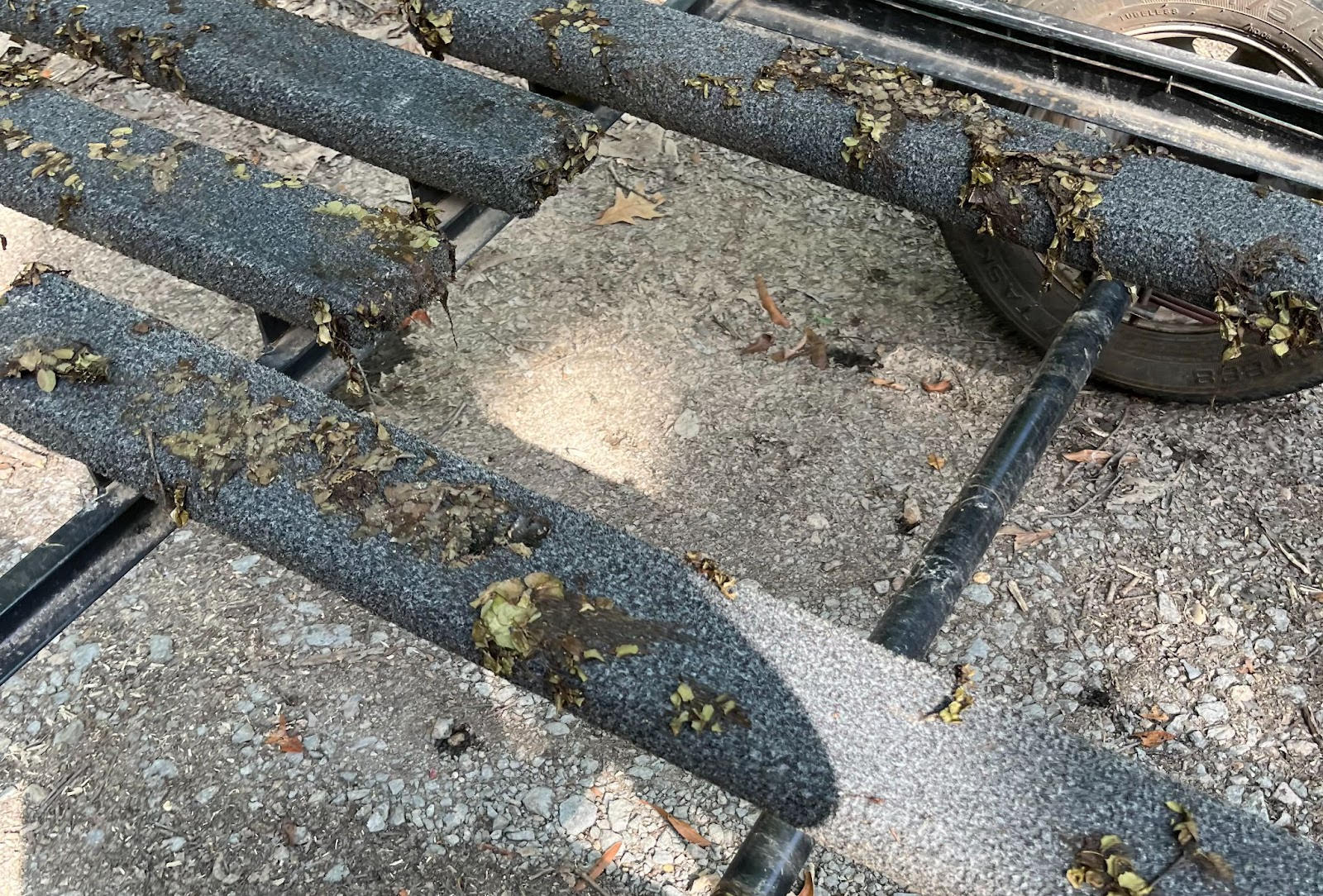
LITTLE ROCK — Arkansas Game and Fish Commission fisheries biologists during the last month slammed the door on two opportunities for giant salvinia, a highly invasive aquatic plant, to creep into new areas of The Natural State.
Giant salvinia is a free-floating South American plant native to Brazil that has become a major threat to fisheries in the southern U.S. Since its first introduction in South Carolina in 1995, it has infested waters in 13 states, from California to North Carolina. Once giant salvinia enters a body of water, it grows rapidly by budding new plants, and can quickly spread by wind and water current.
Giant salvinia can double in mass every two days under optimal conditions. A single plant can multiply so rapidly that the plant will cover dozens of acres within a few months. It forms dense floating mats that shade and crowd out important native plants, reduce oxygen content and degrade water quality for fish and other aquatic organisms. These mats also impede water flow, navigation, fishing, hunting and other recreational activities.
AGFC staff stopped one possible infestation of the invasive plant in Illinois Bayou upstream from Lake Dardanelle. Biologists discovered mature giant salvinia during a June fisheries survey of the bayou. The plant was roughly a mile south of the Arkansas Highway 27 bridge. They removed all plants they could find and inspected the stream for a mile in either direction to ensure it had not spread.
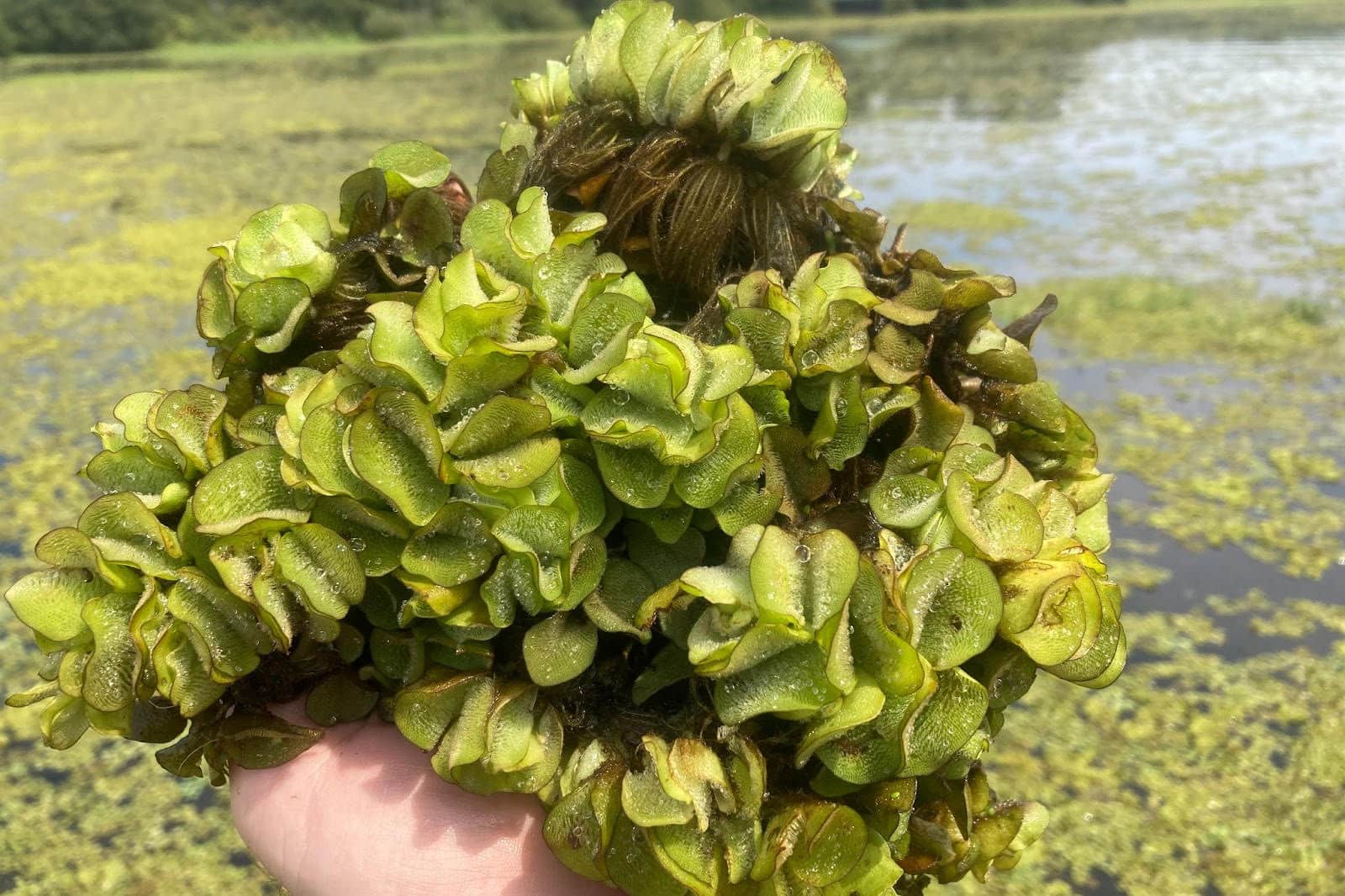
A neighboring landowner was questioned about the possible source of the plant. The person claimed to have been cultivating and feeding giant salvinia to turtles for several years. Exactly where the person obtained giant salvinia was never confirmed; however, the landowner had been cultivating a small crop of salvinia in a tub on his property to continue the practice.
Giant salvinia is federally listed as a noxious weed by the U.S. Department of Agriculture and the Arkansas State Plant Board listed it as one of only four prohibited plant species in Arkansas, due to its threat to our natural ecosystems. This listing means no plant, seed or any reproductive structure can be purchased, sold, introduced or used in plantings in Arkansas.
Once informed about the legal issues involved in releasing a known invasive aquatic plant in Arkansas waters, the landowner destroyed the plants in his possession and promised to find alternative food sources for the turtles frequenting his property. Later inspections concluded that the rest of the bayou was not infested with the plant.
According to Matt Horton, AGFC Aquatic Nuisance Species Program coordinator, the salvinia was found 25 river miles upstream of Lake Dardanelle and had few backwater areas to hide from biologists once found.
“I am confident that we removed all of the plants in the immediate area, but we’ll be keeping an eye on the confluence in Dardanelle moving forward,” Horton said.
Horton said Lake Dardanelle is in the low-to-moderate risk level for giant salvinia to become established because of cold winters helping slow its growth, but any possibility for this plant to become established should be taken seriously, considering the many streams, rivers and lakes connected to Lake Dardanelle and downstream portions of the Arkansas River. Gradual shifts in average global temperature also could complicate the situation.
“Based on future climate predictions, the range of suitable climate conditions for salvinia may shift further north, increasing the likelihood of survival and establishment, and putting more of our state at higher risk if new introductions occur,” Horton said.
The second location where AGFC biologists were able to snuff out a possible infestation was at Clear Lake in Union County within Beryl Anthony Lower Ouachita WMA.
“This detection was in a much more critical area for the plant to become established due to the warmer year-round conditions found in south Arkansas,” Horton said.
Biologists found live plants directly adjacent to a boat ramp on the lake as well as on the carpeted bunks of a trailer that had been used to transport and launch a boat.
Once the owner of the boat was found, he indicated that he had last fished Lake D’Arbonne in Louisiana, which has been infested with the plant. Although it had been 30 days since the previous fishing trip, some of the plants were still green and viable.
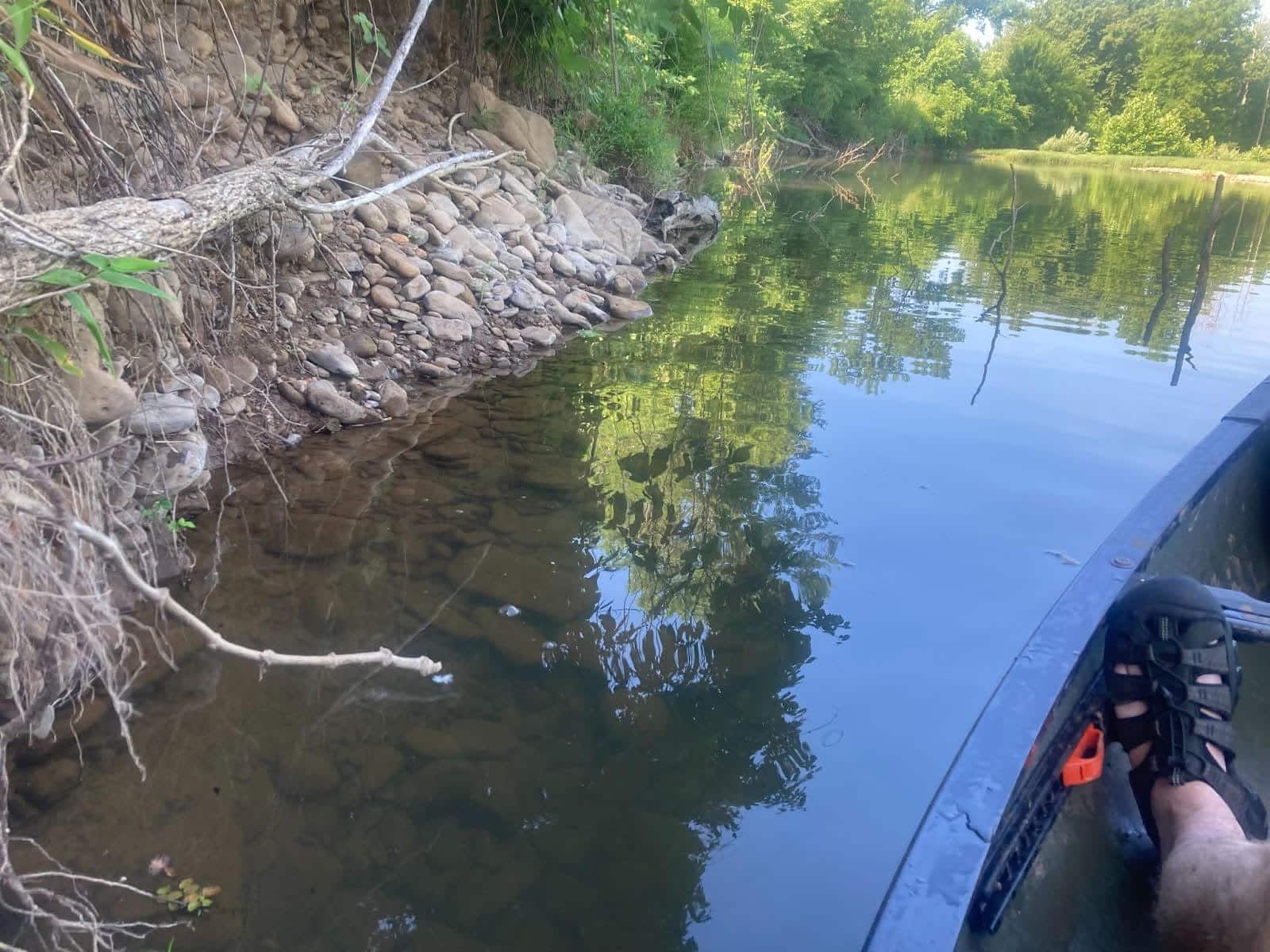
“The fact that these plants had survived this long in the damp carpet between the boat hull and trailer bunk is definitely concerning,” Horton said. “Even if you’ve cleaned all of your boat trailer of debris when you leave a lake, it’s important to inspect your bunks when you launch your boat as well to make sure you don’t inadvertently spread these harmful plants. It only takes a single piece of salvinia to become a nightmare if it is given enough time to grow and spread.”
Because the plant matter was trapped between the bunks and not readily visible, the owner of the boat was given a warning instead of a citation for possessing invasive aquatic plants on Commission-owned and managed property.
Again, all plants were cleaned from the boat ramp and trailer and were disposed of properly. Subsequent inspections have not produced further evidence of infestation.
“These two instances are perfect examples of the two primary ways we get into trouble with aquatic nuisance species,” Horton said. “Plants and animals that escape water gardens and aquariums from illegal dumping, and the unintentional transport of plants and other harmful aquatic hitchhikers through boating and other recreational activities. This is the exact reason we preach for people to clean, drain and dry their boats, trailers and recreational equipment when they leave the water and why you should never release pets or plants into the wild.”
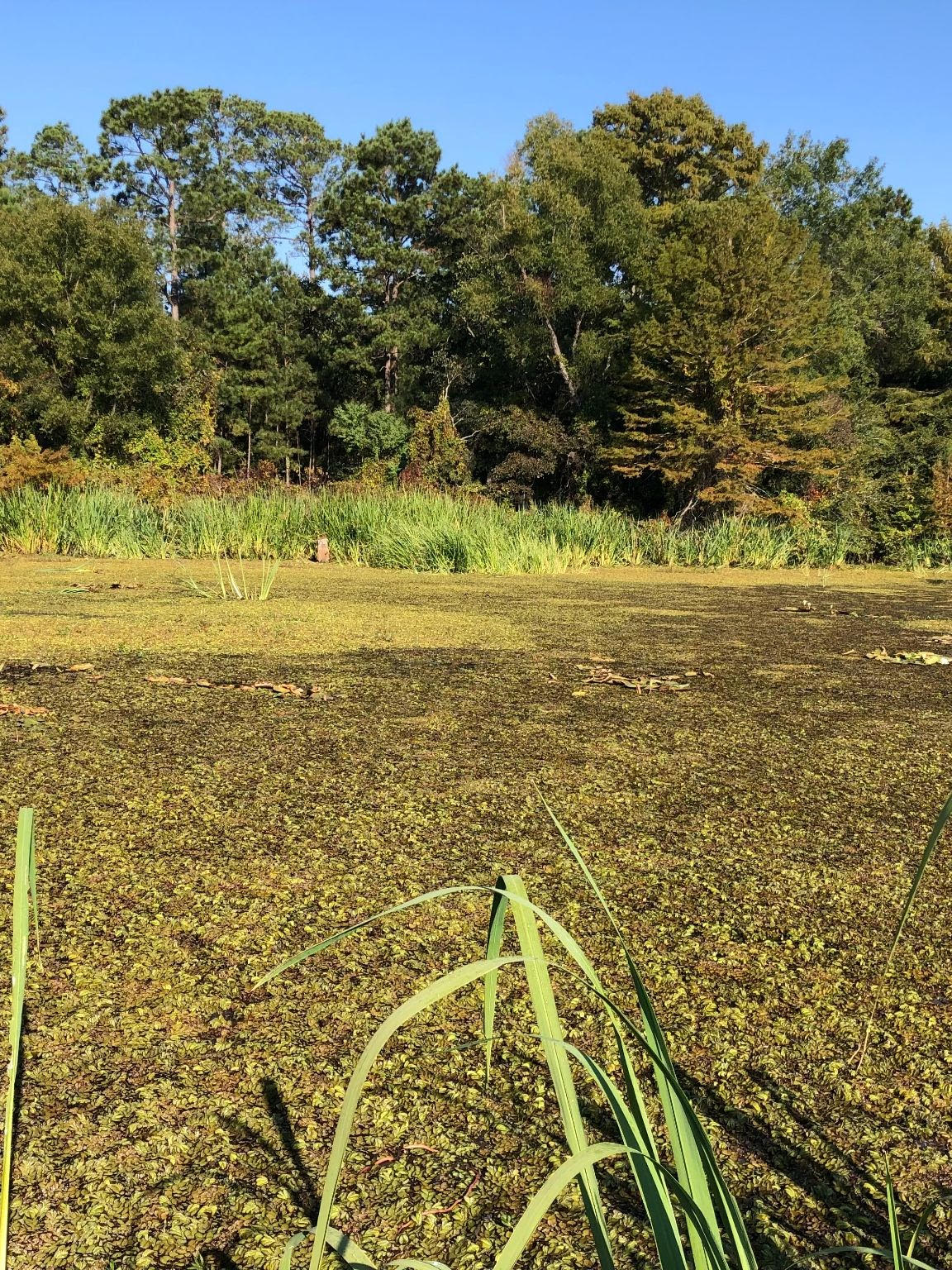
Giant salvinia has been introduced into five Arkansas lakes since 2017, and is established in lakes Erling and Columbia. Infestations at Mercer Bayou, Smith Park Lake and Millwood Lake were prevented thanks to similar early detections.
Visit https://www.agfc.com/en/
####
CUTLINES:
BOAT TRAILER
This boat trailer was found at Beryl Anthony Lower Ouachita WMA with many green pieces of giant salvinia that could have infested the oxbow where the boat was launched.
FLOATING PLANT
Giant salvinia is an invasive aquatic nuisance that can double in mass every two days during summer.
CANOE IN CREEK
Biologists inspected Illinois Bayou via canoe to ensure all pieces of giant salvinia had been collected and disposed of properly.
MAT OF VEGETATION
This mat of giant salvinia at Lake Columbia shows how the plant can cover the surface of a lake and make areas inaccessible as well as uninhabitable for fish.
Recent News
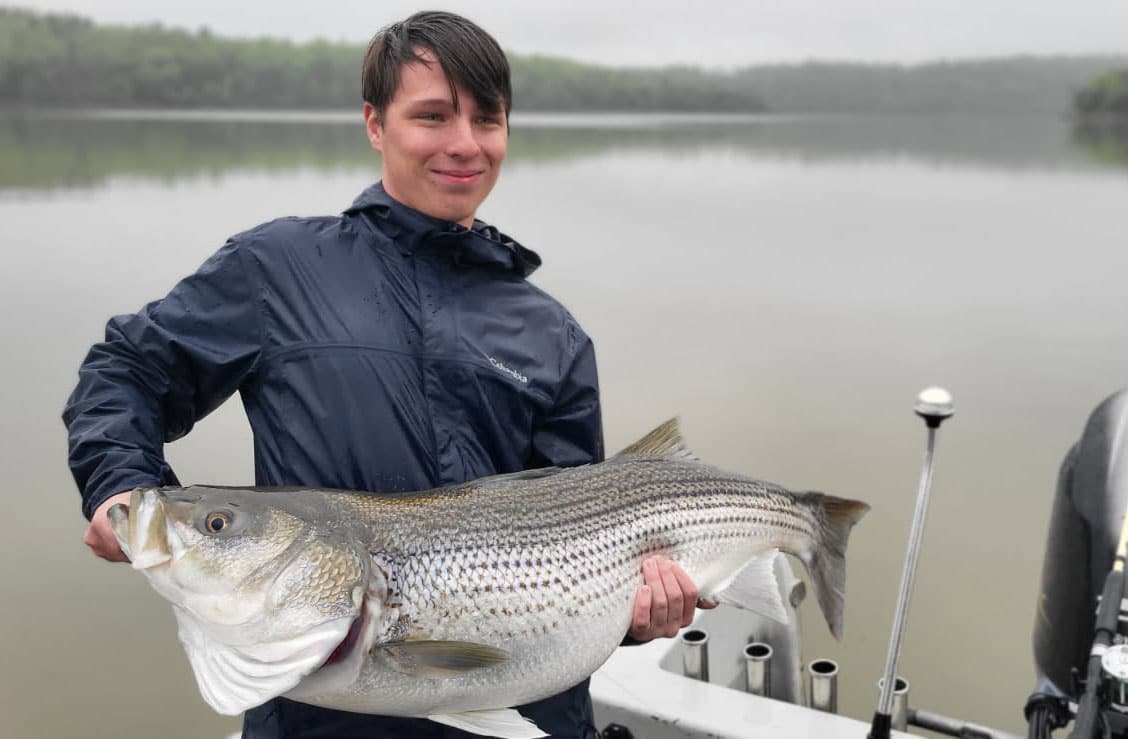
Arkansas Wildlife Weekly Fishing Report
Apr. 24, 2025
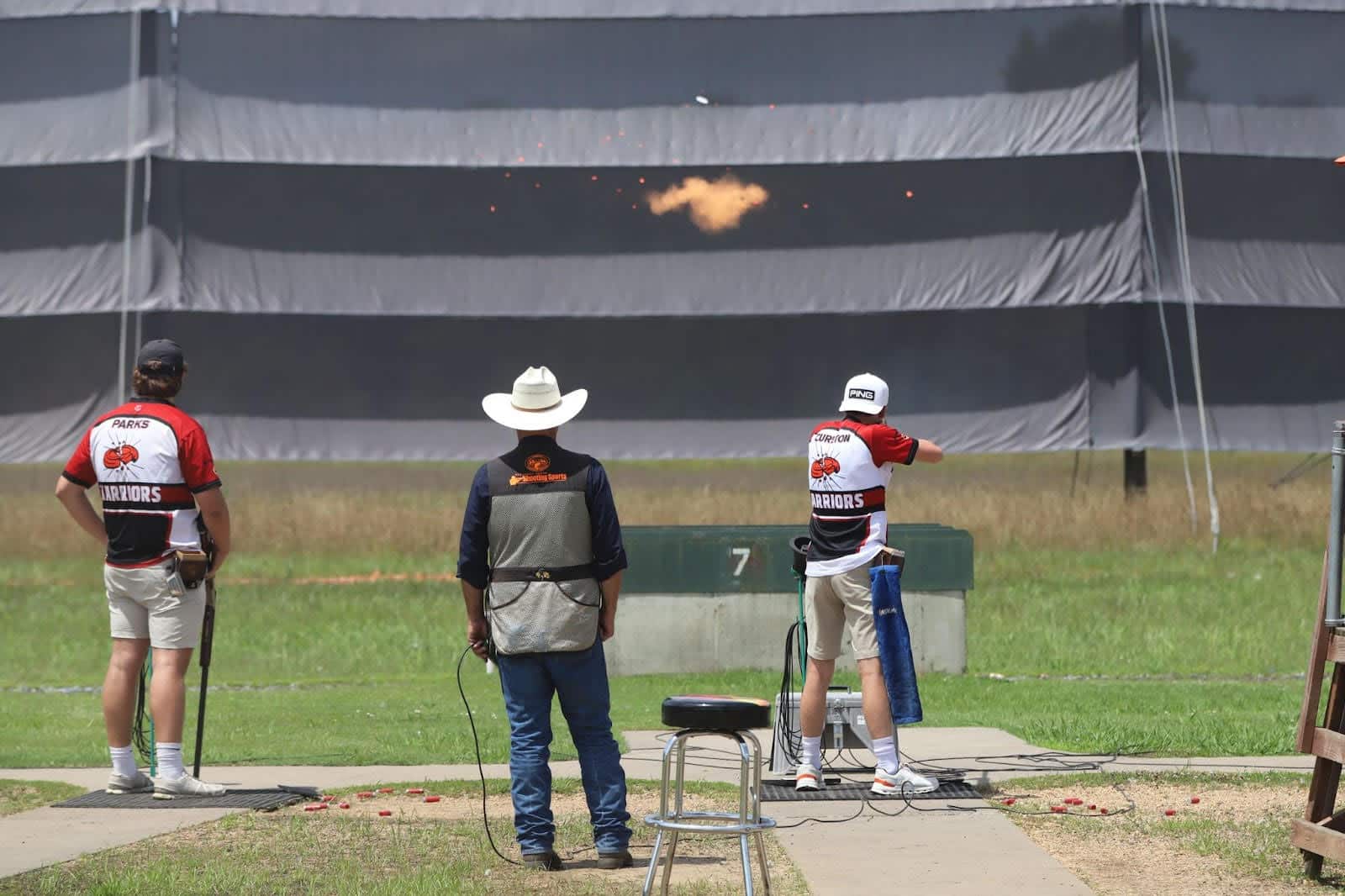
Contenders take aim as shooting sports regionals begin
Apr. 23, 2025
Subscribe to Our Weekly Newsletter E-mails
Don’t miss another issue. Sign up now to receive the AGFC Wildlife Weekly Newsletter in your mailbox every Wednesday afternoon (Waterfowl Reports are published weekly during waterfowl season and periodically outside the season). Fishing Reports arrive on Thursdays. Fill in the following fields and hit submit. Thanks, and welcome!
